- Final Fantasy Brave Exvius Game Overview - September 21, 2022
- Dirge of Cerberus Overview - May 21, 2022
- Yu Yevon Guide: A Closer Look at this Mysterious Character - May 21, 2022
Final Fantasy is one of the most singular series in gaming. Yes, the JRPG is a genre that has so many copycats among it that it can be hard to distinguish sometimes. Still, the reality is that each of these JRPG franchises is striving to grab one ounce of the monstrous influence that Final Fantasy has had throughout the ages.
I’ve been a Final Fantasy die-hard for as long as I can remember, and to put my fandom into perspective, I went through an arduous process, riddled my computer with viruses, and read through pages and pages of translations just to get a chance to play Final Fantasy: Type 0, before it ever released on modern consoles and PCs. Anytime a new release comes out, I make sure it’s a day one buy for me, and regardless of the downfalls of the series, I always believe that the next game they release is going to fix everything,
Part of what makes the Final Fantasy series so incredible is what it makes seemingly ordinary people in the game capable of doing. In games like Final Fantasy VII, you have characters like Cloud and Tifa, who seem pretty normal on the outside, but once they’re in battle, they start slinging around all kinds of magic spells and special attacks, and the mix between this realistic tone and completely over the top combat is what makes this series so special.
The Final Fantasy Magic system has been copied time and time again, but regardless of how many games try to duplicate it, they can never hope to achieve the brilliance that is the magic system in Final Fantasy games.
What Is Magic in Final Fantasy Games?
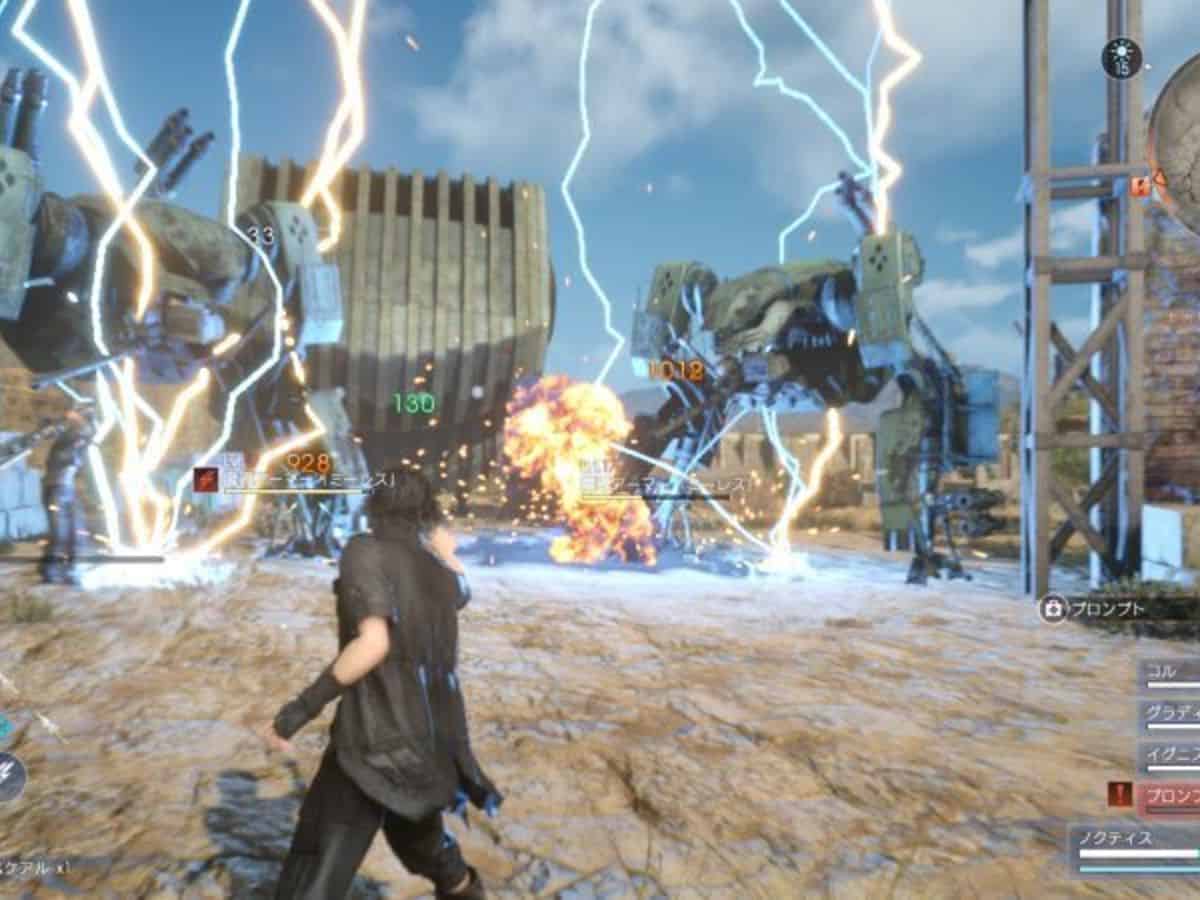
While it’s handled a bit differently by every game in the series, magic is the manifestation of an otherworldly power in Final Fantasy. The worlds and characters change throughout the series, but the presence of magic remains, and although some games introduce unique spells into the series, there are also tons that remain constant throughout all of them.
Magic is one of the original attack types introduced throughout the series and has been a mainstay in every game since the first one. Throughout the series, most of the characters in the games can use magic, although, in some games, it is restricted based on the character classes and is generally used by Mages of all kinds.
How Does the Series Handle Magic?
Magic takes on various forms throughout the series and can be named differently depending on the game you’re playing. In most of the games, there are two types of magic.
There is White Magic, which revolves around healing and support spells, and there is Black Magic, which deals with doing damage and creating damage buffs for your character’s offensive abilities.
Some games add considerably to this system, but at its base, these are the kinds available.
Final Fantasy
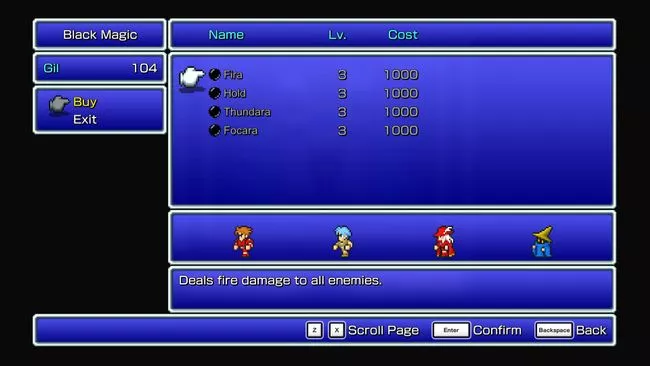
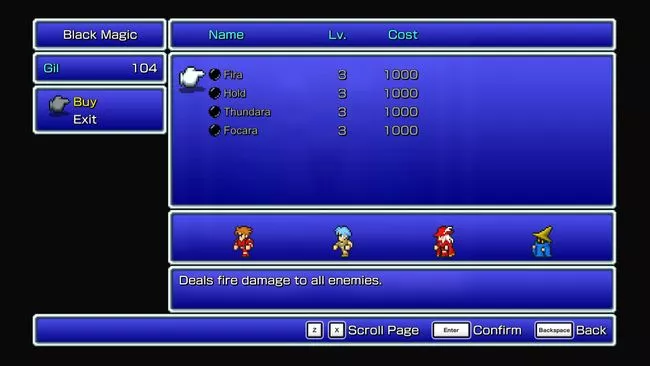
In Final Fantasy, magic was what set it apart from all other games at the time, and while we had seen RPGs, we had never seen an RPG that depicted magic attacks in this way. Final Fantasy introduced the two main categories of magic, Black and White, into the RPG world for the first time.
The White Mage specializes in White Magic, while the Black Mage is able to use Black Magic. Knights are able to use low-level White Magic spells as well. Other classes that could use Black Magic were Ninjas, and the Red Mages were particularly unique in that they can use both Black Magic and White Magic but cannot access the higher level spells of either one.
Unlike most of the later games in the series, Final Fantasy did not utilize an MP system. Instead, it uses a system that has you organizing spells into specific tiers, and each character can learn three spells in each tier. Uniquely, this means you have to forget spells that you already know.
Each of the tiers of the spell chart has a number of charges that allow it to be used. Once you use up all your charges, you can no longer cast magic until you rest at an inn or use a specific item to replenish it.
Final Fantasy II

Final Fantasy II evolved the formula in a number of ways, and in order to learn new spells, you had to collect Tomes that are found throughout the game. Any character was able to learn any spell in this game, and this time around, all characters have 16 spell slots.
Magic in Final Fantasy II levels up through your use of it in battle and the field. As you use them more and more, it will gain a level. This will get tougher as the game goes on, and eventually, you’ll need to fight harder enemies to get any increase to happen. The highest level a spell can reach is 16 and becomes a Mastered spell which takes on a new attribute.
For the first time in the series, MP is what governs what spells you use and how many you can use. A spell’s MP is equal to its level, so it’s easy to figure out which spell will cost what and use it accordingly. This marked a system that would become used many times throughout the rest of the series.
Final Fantasy III
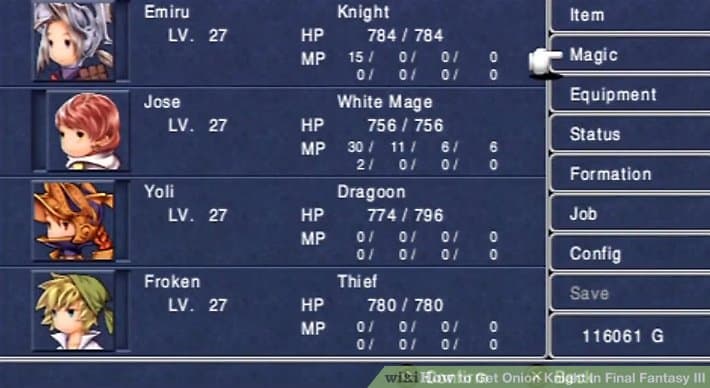
Final Fantasy III is an important addition to the series because it expanded upon the magic system in order to introduce summons to the game. Summon magic is when a character can summon a monster to help out in battle, and it went on to define a ton of games in the franchise.
Final Fantasy III had three types of magic. Black Magic, White Magic, and Summon magic, and in this game, the magic system was fully restricted to the job types. In particular, the Summoner class became incredibly important because they were the only class able to summon creatures to help in battle. Other classes that could cast magic were Magus, Black Mage, White Mage, Red Mage, Knight, Evoker, Sage, and Devout.
Final Fantasy IV

Final Fantasy IV more or less ditched the character class system and started individualizing characters more than ever before, which helped not only the story of the game, but also gave the combat a more personalized feel as well.
There were 4 types of magic available in the game for the first time ever. Black Magic, White Magic, Summon Magic, and Ninjitsu Magic are all available here as well as the Twin Magic ability added in too.
Magic learning felt much different in Final Fantasy IV because characters would now learn spells at their own rate. There was no longer a system that remained a constant for each of the characters. Certain characters who were more magically inclined would learn spells faster, and Summon spells would be optional for the most part and relied on the player to seek them out.
Final Fantasy V

Final Fantasy V expanded the magic system more than ever before, creating a battle system that relied on magic more than it ever had been in previous games. Now, there were more spell types than ever before, and the magic categories are White Magic, Black Magic, Time Magic, Spellblade Magic, Blue Magic, and Dark Arts Magic.
The characters were broken down into jobs again, but characters, for the most part, could cast the majority of the magic in the game. For the first time, you could job switch during the game, and that enabled any character in the game to use magic. It was still mostly restricted to classic, magic-type jobs, but the ability to switch them out at any time created much more variety in the gameplay.
Final Fantasy V would be the last Final Fantasy game to use the job system for a long time.
Final Fantasy VI

In the final 2D Final Fantasy game, Final Fantasy VI heavily emphasized magic, making it more powerful than ever before and completely crucial to the success of your party, especially against some of the optional bosses throughout the game.
Any character in the game can be equipped with all of the spells in the game except Gogo and Umaro as long as they have the right type of Esper’s Magicite equipped.
There were more spells available than ever this time around, and they were more over the top looking and damaging than in previous games. There were three categories of magic here. Healing Magic, Attack Magic, and Effect Magic.
Final Fantasy VII
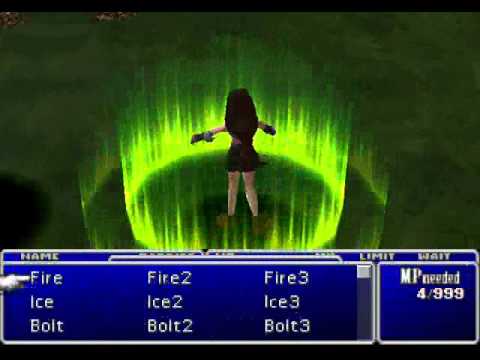
With the introduction onto the Playstation, Final Fantasy VII had to come in big with the magic system and fusing the classic magic of Final Fantasy into the next generation of gaming with incredible results.
The Magic system gained a name for the first time in the series, and although the command was still named magic, the system revolved around something called Materia. The Materia system governed not only the magic you could use but also the abilities in the game as well.
Some of the spells in each Materia would require AP to be gained before they could become unlocked, so it gave you an incentive to use the magic as much as possible in battle so that you’d level it up faster and gain the ability to use better spells.
Summon Spells were restricted to their own Materia and were among the most damaging spells in the game; many of them were optional, with some being incredibly difficult to acquire.
Final Fantasy VIII
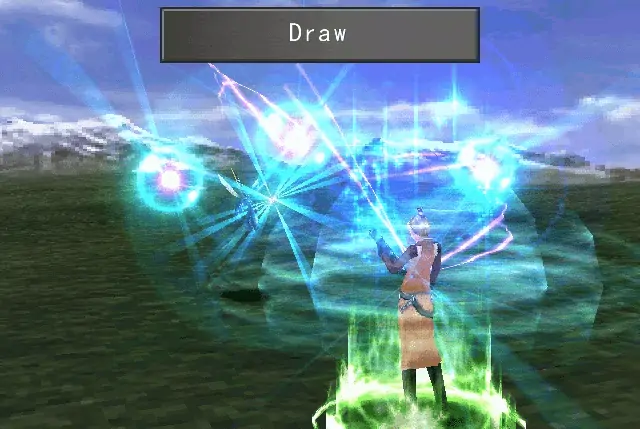
Coming hot off the heels of the mega-hit that was Final Fantasy VII, Final Fantasy VIII introduced yet another brand new type of magic system. This time around, it was the Draw system that determined how magic would be used. This worked by having you use the Draw command on any enemy in the game, and the result would be your character absorbing magic from them.
The magic could then be used against them, but the catch here was that the magic would be limited in its number, so if you run out of magic, you wouldn’t be able to use it anymore. Further complicating things was the ability to junction magic to things like your health and strength, making it a strategic decision each time you used a particular spell as it could not only run out but weaken your character’s stats.
Summons also play a huge part in the Final Fantasy VIII magic system, and any summon could be equipped by any character.
Final Fantasy IX
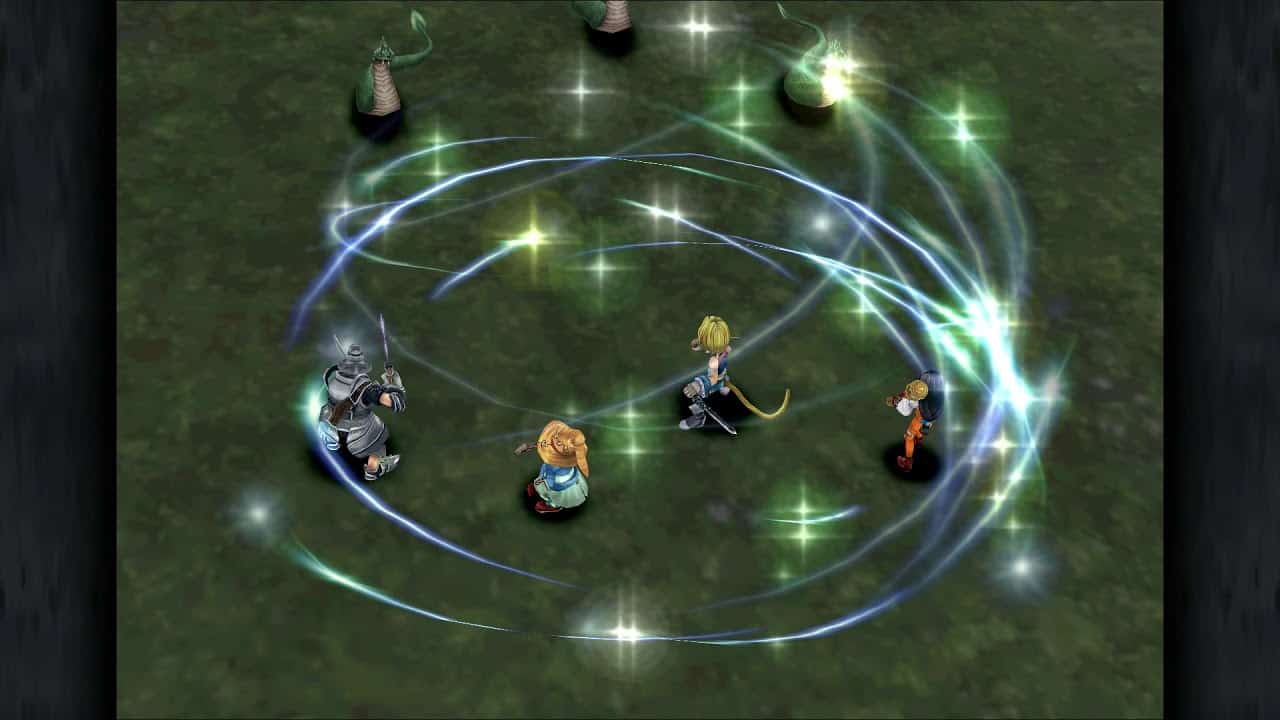
Final Fantasy IX is one of the best beloved in the series, and it introduced yet another new magic system. Characters were separated into classes again for the first time in a few years, and that determined who could and couldn’t use magic. Certain characters were able to combine their abilities, such as Vivi and Steiner, opening up the possibility for any character to use magic at times.
Magic is learned here by equipping items that have the abilities attached to them. You need to earn AP through battles for the ability, and once the proper amount has been earned, then you learn the ability permanently.
You can activate your magic abilities through the use of magic stones, but once you use the amount you have, you can’t equip any more abilities, making it a strategic choice on which ones you should bring into battle with you.
Final Fantasy X
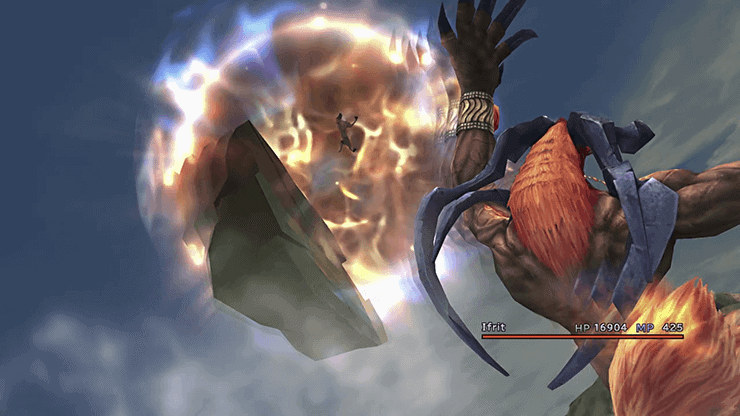
Final Fantasy X welcomed the next generation of gaming on the PS2 with a brand new magic system that emphasized unlocking nodes on a system called the Sphere Grid. It was here that you could unlock all of the different spells available throughout the game, and any character had access to it.
There were multiple characters who specialized in magic, like Lulu and Yuna, but as long as you had their specific nodes unlocked, any character could use any kind of magic.
This is not the case for summons, though, as considering it is part of the storyline, only Yuna is able to summon in Final Fantasy X.
Final Fantasy XI
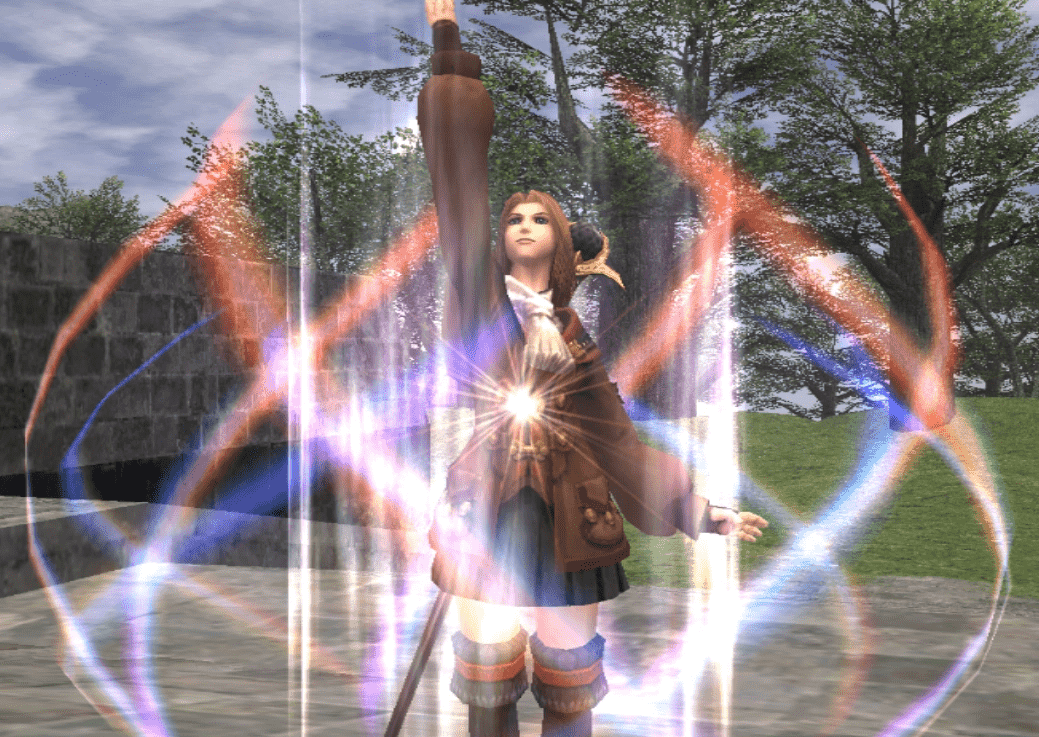
The first online Final Fantasy game brought with it a litany of choices when it came to the magic system. The game was broken down into 22 jobs to choose from, and although most of the jobs could use magic, some were restricted to certain kinds, which made choosing a specialty all the more important.
There were multiple types of magic in this game which included Black Magic, White Magic, Blue Magic, Summoning Magic, Geomancy, Songs, and Ninjitsu. There were tons of different magic spells available with a variety of different kinds of magic effects as well. Elemental alignment meant a ton here, and matching up the correct spells vs. certain enemies was a huge benefit to winning some tough fights.
Final Fantasy XII
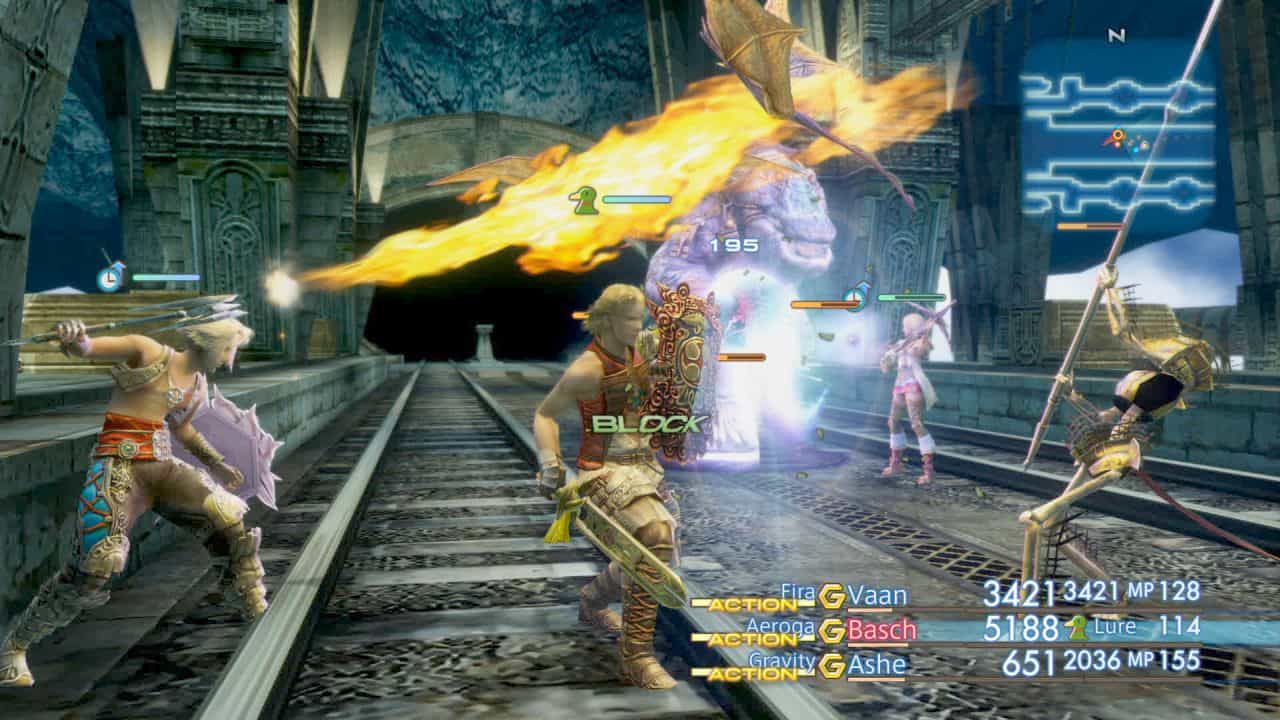
Final Fantasy XII introduced the Magick system into the series, which revolved around unlocking spells on a grid similar to the way you could in Final Fantasy X. There are several jobs you can choose from in the game, and when you choose them, you will automatically get the ability to unlock another job as well, giving you the chance to add spells to your repertoire if you so choose.
MP is what determines how many spells you can use here, and due to the first introduction of pseudo-real-time combat here, the time taken to cast magic spells came into play for the first time in a non-online game in the series. This meant you’d need to get considerable distance from your enemies to safely cast spells, and the result was magic being used much more strategically.
Summon magic was available here again as well, though unlocking the summons revolved around defeating them in the story or optional sidequests in order to unlock them on your summon grid. Each summon would be locked to a character after they unlocked them on their grid, so it was important to choose carefully.
Final Fantasy XIII
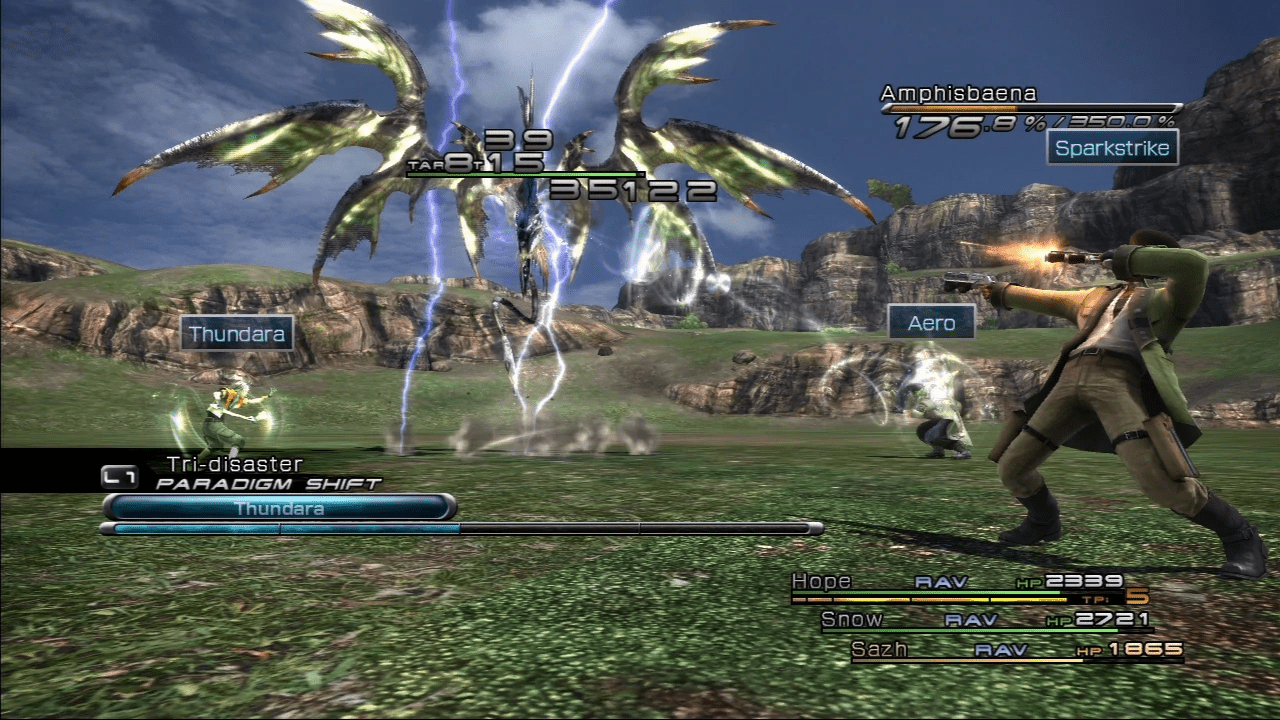
Final Fantasy XIII introduced an interesting system called the Paradigm shift, which determined when magic spells could be used. In order to use magic spells, you had to perform a Paradigm shift in battle, and considering you could only control one character per battle, it added a lot of strategy into when would be the right time to use magic vs. physical attacks.
Summon magic works here as well, except the summons are much different than they normally would be. Here, they function as six different playable summons and a few that are unplayable as well.
Final Fantasy XIV: A Realm Reborn
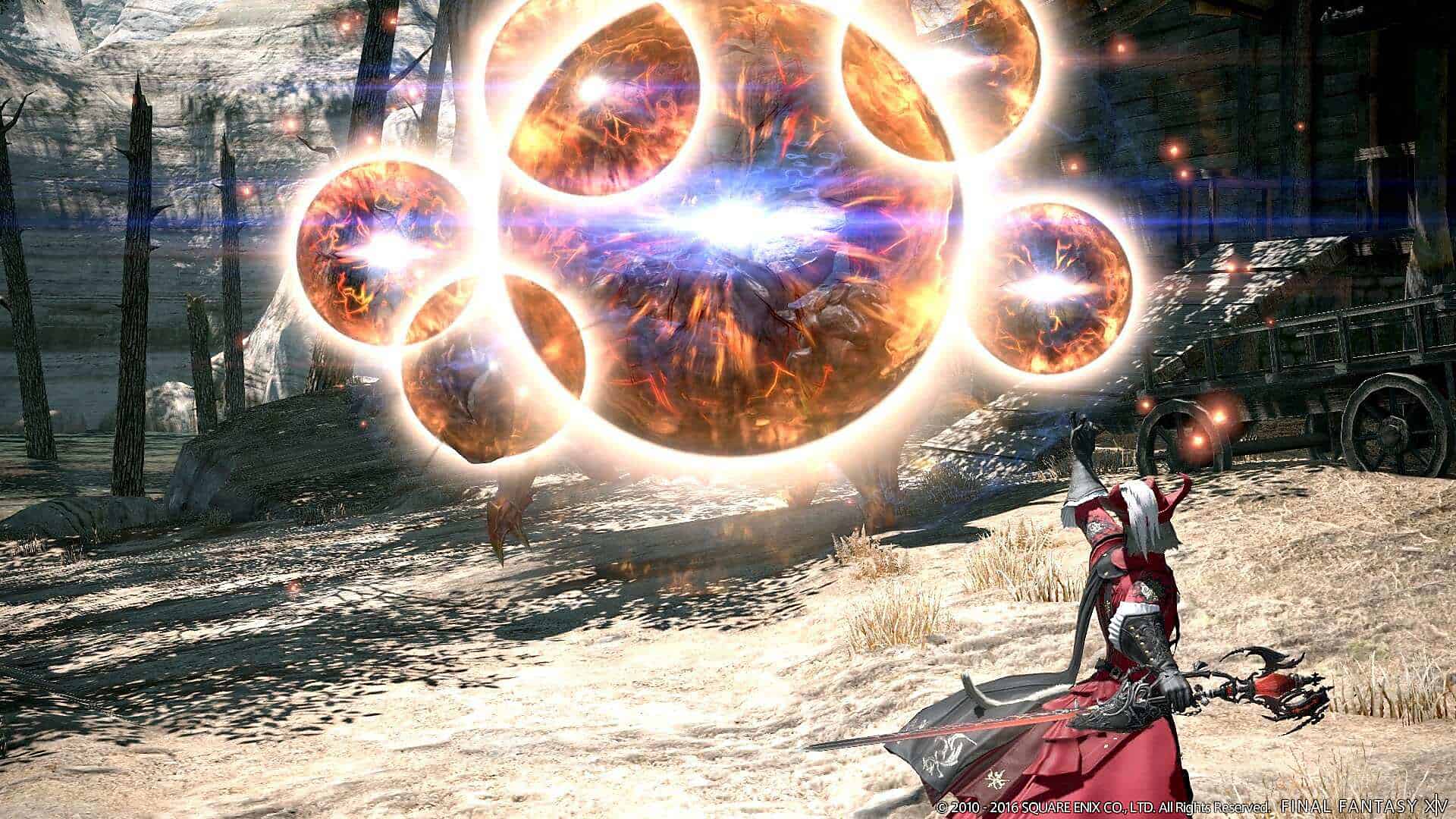
Magic in Final Fantasy XIV: A Realm Reborn was back to basics when it comes to casting magic, and depending on your chosen class, you are able to cast magic during real-time battles. Each time you reach a different level tier in the game, your magic abilities increase, and you gain new spells to use.
A character is never bound to the starting class they choose either, so you can try multiple classes and then switch, although each time you switch, you will have to level them up again from the starting class, which takes time.
Summons can be used by the Summoner class in Final Fantasy XIV: A Realm Reborn, and they go by the names of Primals in this realm. When they appear, they fight by your side in battle and use a variety of very powerful attacks.
Final Fantasy XV

Final Fantasy 15 uses a very unique magic system that has not been seen in any other game prior. Instead of learning spells, you absorb the elements of Fire, Ice, and Lightning from elemental crystals you find in the world. Once you have that, you can make spells out of each of the elements or combine all three for combined effects.
What makes this system even more unique is that with each of the spells you create, you can add an item to them to make them act completely differently, like do damage to enemies while healing you or cast three times in a row. It encourages a lot of experimentation to see all the crazy combos you can come up with.
In battle, any of the 4 playable characters can use magic, and it’s of it being cast, the spell appears in the form of a ball that gets thrown and explodes upon impact into the selected form. Unlike other games, there are only 3 elements available here, although some of the items could add effects like healing and even poison to the spells.
Final Fantasy VII Remake
Final Fantasy VII Remake again uses the Materia system from the original game, with the only difference being that you can now cast the spells instantly in real-time. You have a variety of different elemental spells available with very different effects to them, and all of the ability-based Materia returned as well.
There are summons here again as well, and summoning using Materia in battle results in a bombastic attack that generally devastates your enemies.
Magic is usable by every party member in the game as long as they have the Materia on hand capable of casting it. MP determines the use of your spells, and keeping an eye on the gauge becomes crucial in the fast-paced combat system.
Magic Types Throughout the Series
Magic has a ton of variety throughout all of the games in the series, and usually, the magic types remain consistent in what they do from game to game. We’re going to check out some of the types that come up throughout the series and the effects and the different spells that are attributed to them.
Black Magic

This magic generally deals with damaging the enemy in a variety of ways. It can involve multiple elements, and throughout the series, you’ll find most games offer you spells with fire, thunder, ice, poison, wind, water, earth, and non-elemental properties as well. Different Black Magic spells have stages of getting to each game. Some games signal this by putting a number next to the spell, such as Fire 3, while others will completely change the world for the spells, like going from Blizzard to Blizzaga.
You will also find spells such as Berserk and Death magic in this category as well.
White Magic

White Magic is healing magic that is found in each and every Final Fantasy game. You will get these spells early on, and usually, most characters will be able to cast them. There are some offensive spells in the White Magic type, but they generally are most effective against undead enemies.
You will find spells such as Cure, Revive, Reflect and Protect among the spells available to you here. White magic can be incredibly important at times, and there’s a reason it’s been a consistent factor in every game, even today.
Summon Magic
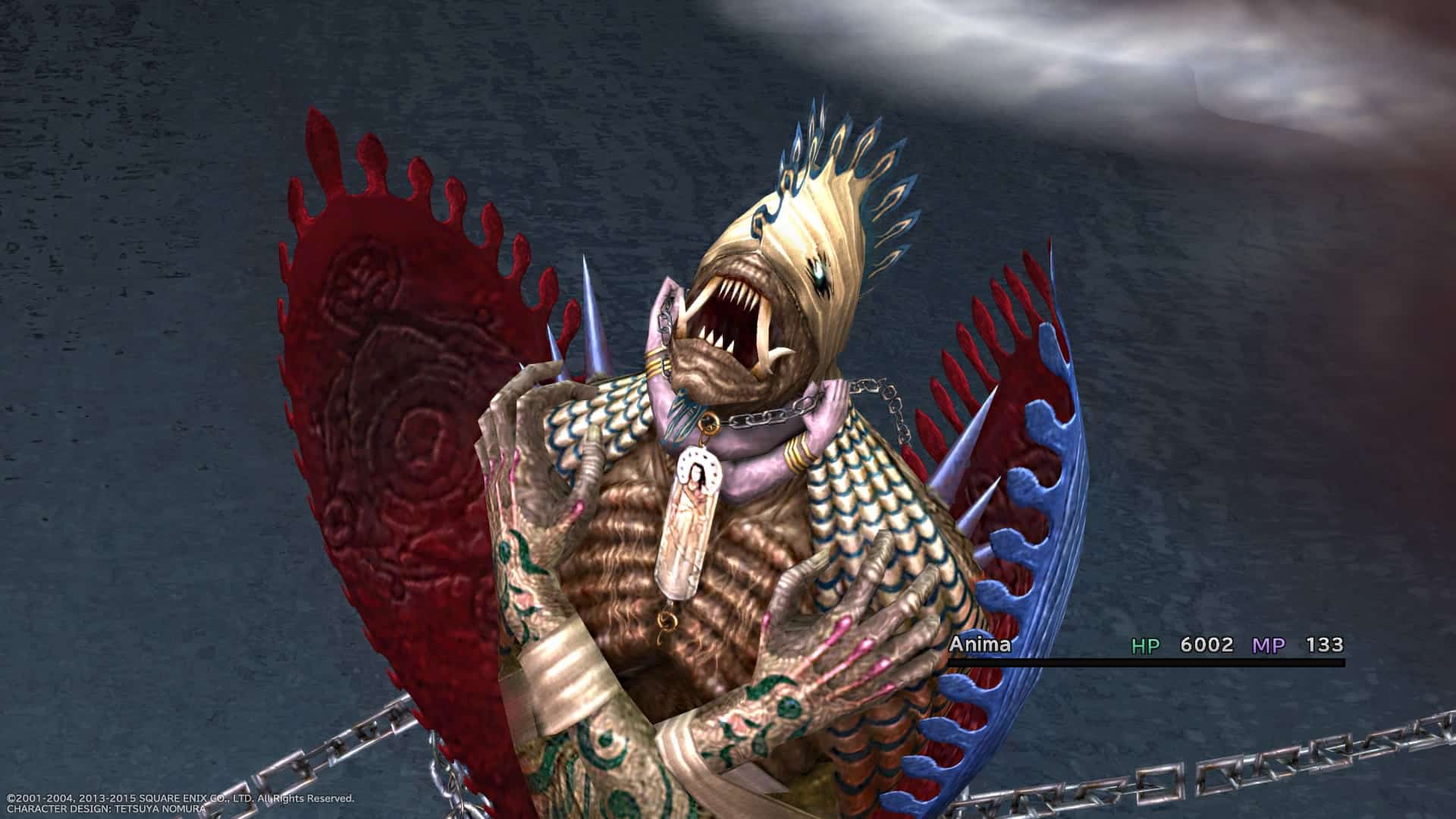
Summons are available in every Final Fantasy game you can find, and they’re among the most over-the-top attacks in all of gaming. Each game generally introduces some unique ones into the lore, but you’ll also see summons that reoccur throughout the series, such as Shiva, Ifrit, Ramuh, and the godfather of them all Bahamut.
Some games let you control the summons, while others just have you sit back and watch as they rain down their crazy attacks on your enemies.
Time and Space Magic
Time and Space magic is very important in the Final Fantasy series as it determines how fast your party can attack or move in the real-time combat games. Spells such as Haste increase the frequency when a party member can attack, while a spell-like Slow can delay your enemy’s ability to unleash an attack against you.
There are also several offensive spells like Gravity, which is a non-elemental spell that slams your opponent to the ground. The majority of Time and Space magic are just support spells, but every so often, they can deal a lot of damage as well.
Blue Magic
Blue Magic is extremely unique on the magic spectrum. Unlike other spells, Blue magic directly involves your enemies. See, you actually get to absorb spells from enemies you can throughout the game, and that’s generally done through learning them over a period of time, whether that means filling up a bar in your character menu or through other means.
Classic Blue magic attacks are Bad Breath and White Wind, and these attacks usually deal with elemental effects or status effect-based attacks. You can find the best attacks generally attributed to the toughest enemies in the game, so be prepared.
Spellblade
Spellblades are hybrid characters that get to utilize both magic and physical attacks as well. They usually benefit greatly from having a Mage in the party as it will give them the ability to combine certain spells together. One example of this is Steiner and Vivi in Final Fantasy 8, where they will combine to do several sword-based, elemental attacks.
Tips on the Magic System
Bring a Mage Along
You always want to have a strong magic user with you in a Final Fantasy game, regardless of which game it is. The Creatures you face off against in these games will always have a leg up on you in terms of HP, but Mages can cut that down considerably with powerful spells. Some games will have every character able to cast magic, but there are others where it’s specific to certain characters, so plan accordingly.
Know Your Element
Figuring out your enemy’s elemental weaknesses can be key to victory in Final Fantasy games. For example, the recurring enemy Bomb in Final Fantasy games comes in a variety of elements, with the most common one being fire. When you encounter one, you want to make sure you’ve got some ice spells on hand, as it will do far more damage than any other attack you have available.
Ethers Are Key
Keep Ethers on hand at all times. Ethers are valuable potions that don’t cost too much and fill up your MP bar. Considering you’re going to be leaning on this MP bar a ton during fights, you never want to run out at a tough moment, so spend a little extra to have a little more support.
FAQ
Question: What is the strongest spell in Final Fantasy?
Answer: Ultima is usually the best spell you can find in any Final Fantasy game, and some games have this spell used by the final boss to prove its incredible power.
Question: Which characters can use magic in Final Fantasy?
Answer: It depends on the game, but usually, most characters can cast magic of some sort throughout the series. Other games only allow Mages and similar classes to use magic.
Question: How many spells are there in Final Fantasy games?
Answer: The answer would be countless. Throughout the 40 year history of the franchise, there have been hundreds and hundreds of spells created from all different elements with different effects to them.
Conclusion
The magic system is what separates Final Fantasy games from others in the genre to me, and a mix of amazing and over-the-top spells has always been such a gripping and awe-inspiring thing to behold. If you’re thinking about picking up a Final Fantasy game for the first time, get ready for some incredible powers being put in your hands. Hopefully, this guide helped you understand the magic of Final Fantasy.
